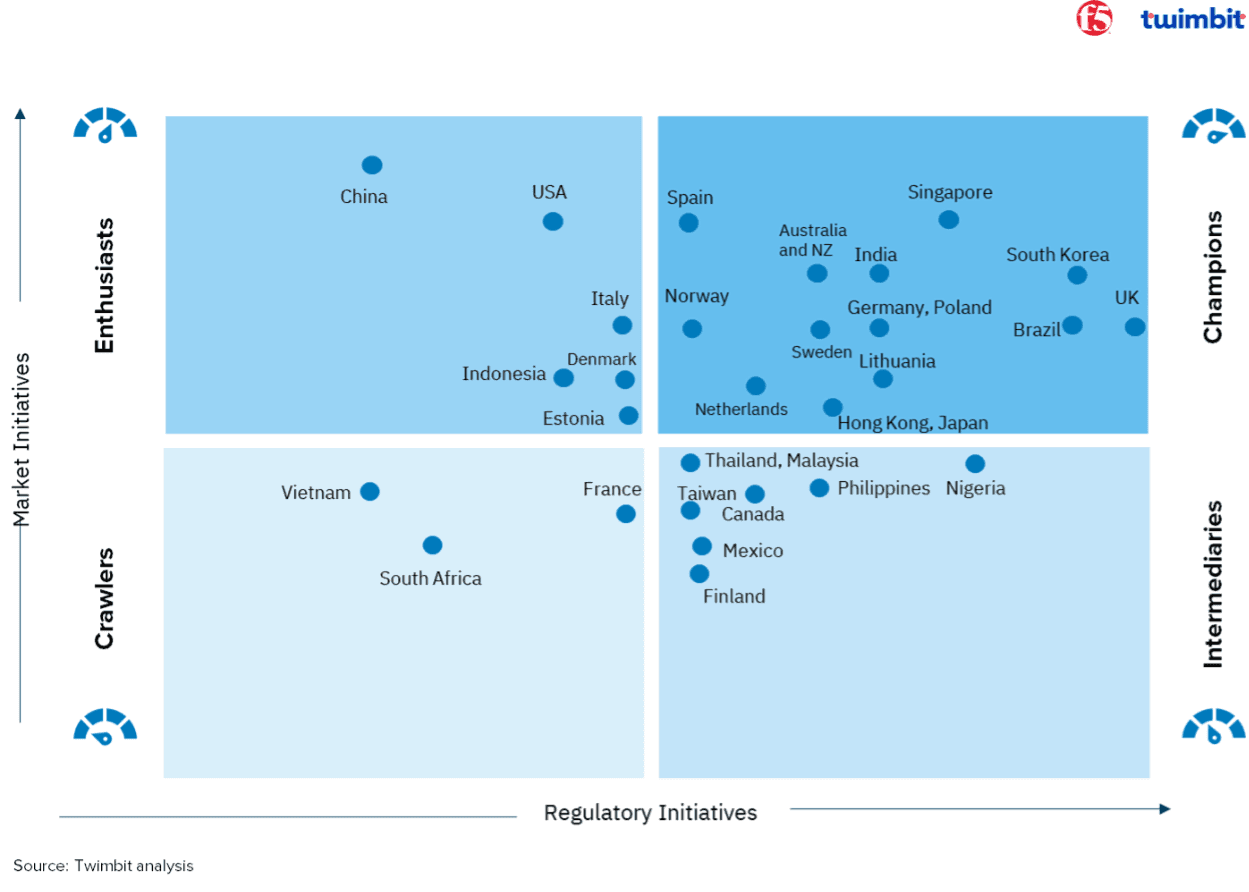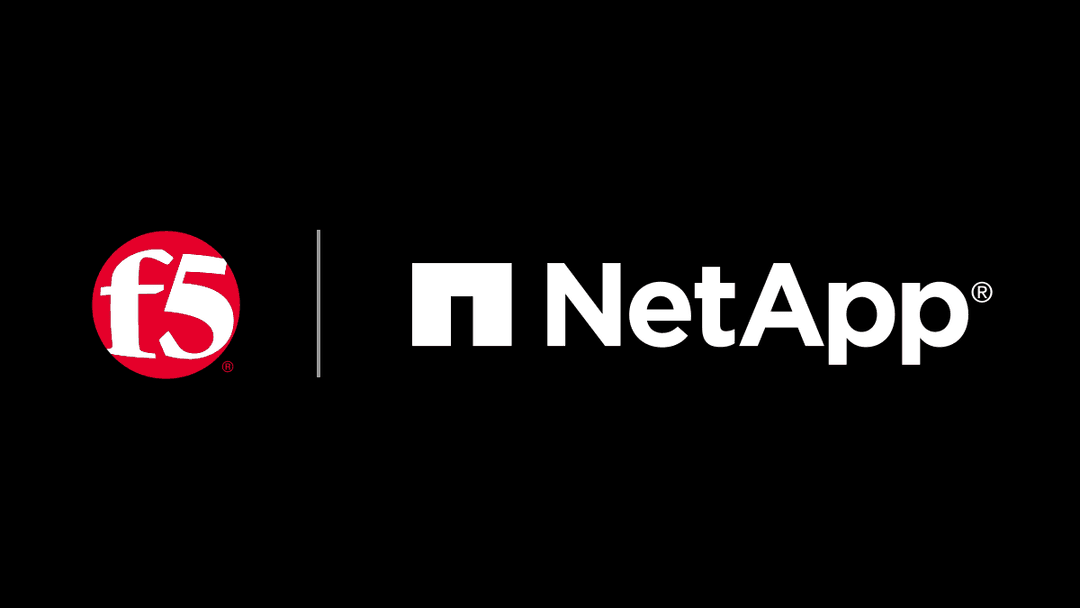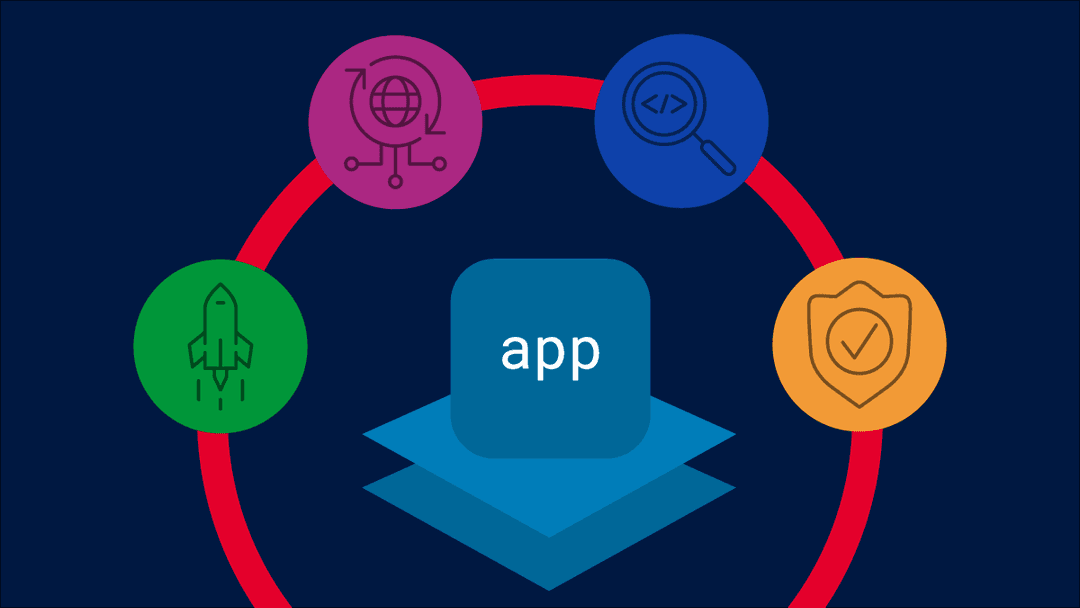Guest bloggers Varnika Goel, Co-founder and Research Director at Twimbit, and Shrestha Patodia, Senior Consulting Analyst at Twimbit discuss their report, “Global State of Open Finance 2025,” developed in collaboration with F5.
The financial world is entering a new phase—one defined not by closed systems or siloed channels, but by openness, interoperability, and embedded intelligence. A global shift is taking place in which consumers and businesses can securely share their financial data across platforms, apps, and services to access better, more personalized experiences.
From instant credit approvals in e-commerce checkouts to holistic money management tools, open finance is making financial access easy for the masses. It is built on an architecture of trust, governed by policy-aware APIs.
Our report, Global State of Open Finance 2025, explores how open finance is unfolding across regions, with the goal of helping businesses make more informed decisions on open finance in the era of AI.
A global movement with local realities
Across the globe, many governments and regulators are pushing toward open finance frameworks, each tailored to local priorities:
- The UK’s Open Banking initiative started a wave of regulated data sharing.
- Brazil has gone further with Pix and a full Open Finance mandate.
- India’s Account Aggregator framework integrates banking, insurance, pensions, and investments under user consent.
This global activity is producing results. Financial institutions are exposing a significant number of APIs, with over 137 billion API-driven financial transactions occurring each year.
Yet, today, more than 1.4 billion people don’t have access to traditional banking services—a signal of how much potential is still untapped. With embedded finance projected to create $7.2 trillion USD in new value, the imperative is to build infrastructure that can scale across markets and protect data.
APIs acting as a foundational layer of open finance have transcended from connectivity to control. Traditional integrations relied on brittle custom connectors; open finance APIs are designed for interoperability, auditability, and resilience.
For example: A lending platform might aggregate income and spending data across five banks to assess risk. Or a fintech savings app could pull in insurance and pension data to offer investment advice.
API security: The enabler of trust and scale
Every API in the open ecosystem must validate the data usage, controls, and permissions in real time. That means adopting zero-trust principles is critical, not just for external third parties but also between internal systems and services.
- API gateways manage traffic and enforce policy.
- Authorization proxies handle fine-grained permissions and identity checks.
- Monitoring systems detect anomalies and support compliance audits.
In regions where regulation is still catching up, these capabilities often outpace compliance requirements. They offer institutions a way to innovate securely and prepare for future interoperability.
AI is now essential to financial services innovation, with the potential to drive real-time risk scoring, more personalized engagement, and better fraud detection, all reliant on secure, high-performance APIs. APIs are evolving from simple connectors into control layers for intelligent agents. Whether it’s a virtual CFO making liquidity decisions or a cross-border payments bot optimizing foreign exchange routes, these agents will act through APIs.
To safely unlock AI’s potential in open finance, APIs must do more than expose functionality. They must embed trust, enforce real-time controls, and make every interaction accountable.
Mapping the momentum: Global Open Finance Maturity Index
Featured in the aforementioned report, Twimbit’s Global Open Finance Maturity Index, developed in collaboration with F5, evaluates 32 markets based on two key pillars: regulatory initiatives and market-driven innovation. Together, these offer a comprehensive view of how financial ecosystems are evolving.
Each country falls into one of four categories:
- Champions like the UK and South Korea show strong leadership across both regulatory and market fronts.
- Enthusiasts, including the U.S. and China, exhibit vibrant fintech innovation but are still evolving their regulatory models.
- Intermediaries, such as Nigeria and Thailand, are steadily progressing across both dimensions.
- Crawlers, like Vietnam and South Africa, are in early stages laying the groundwork for future growth.

Twimbit’s Global Open Finance Maturity Index, developed in collaboration with F5, evaluates how financial ecosystems in 32 countries are evolving in terms of regulatory initiatives and market-driven innovation.
This framework highlights the different starting points and strategies countries are taking to modernize finance—each shaped by unique policy goals, infrastructure readiness, and innovation cultures. As global standards converge, the opportunity lies in accelerating secure interoperability and designing policies that keep pace with innovation. The journey to open finance leadership is not linear—but it is happening everywhere. And every step forward builds toward a more inclusive, API-driven financial future.
To explore how different regions are approaching this transition and what it means for your architecture, compliance, and competitive strategy, explore our report in collaboration with Twimbit: Global State of Open Finance 2025.
Also, be sure to learn more about better securing your open finance ecosystem.
About the Author
Related Blog Posts

AppViewX + F5: Automating and orchestrating app delivery
As an F5 ADSP Select partner, AppViewX works with F5 to deliver a centralized orchestration solution to manage app services across distributed environments.

Build a quantum-safe backbone for AI with F5 and NetApp
By deploying F5 and NetApp solutions, enterprises can meet the demands of AI workloads, while preparing for a quantum future.

F5 ADSP Partner Program streamlines adoption of F5 platform
The new F5 ADSP Partner Program creates a dynamic ecosystem that drives growth and success for our partners and customers.
F5 NGINX Gateway Fabric is a certified solution for Red Hat OpenShift
F5 collaborates with Red Hat to deliver a solution that combines the high-performance app delivery of F5 NGINX with Red Hat OpenShift’s enterprise Kubernetes capabilities.
F5 Silverline Mitigates Record-Breaking DDoS Attacks
Malicious attacks are increasing in scale and complexity, threatening to overwhelm and breach the internal resources of businesses globally. Often, these attacks combine high-volume traffic with stealthy, low-and-slow, application-targeted attack techniques, powered by either automated botnets or human-driven tools.
Phishing Attacks Soar 220% During COVID-19 Peak as Cybercriminal Opportunism Intensifies
David Warburton, author of the F5 Labs 2020 Phishing and Fraud Report, describes how fraudsters are adapting to the pandemic and maps out the trends ahead in this video, with summary comments.